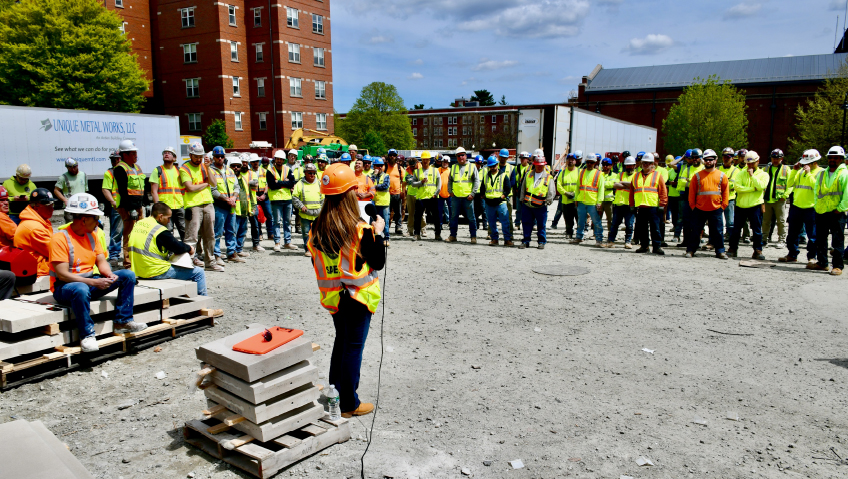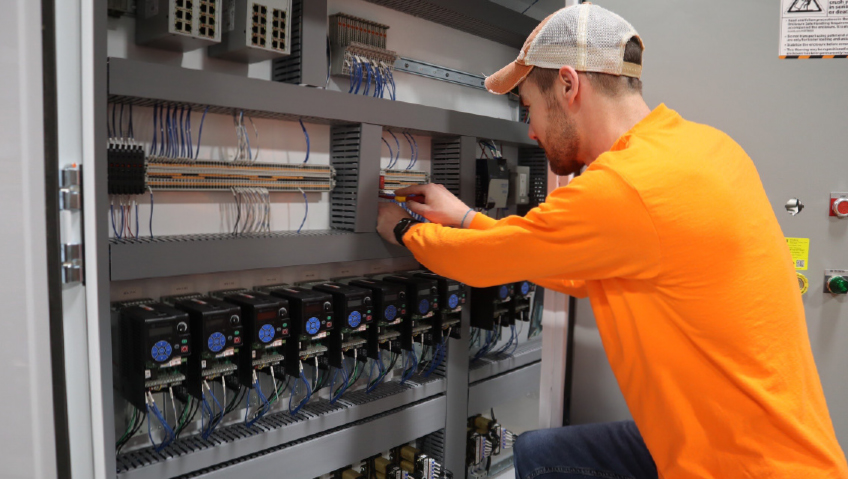Narrow scaffolding and steep roofs, gaping pits and collapsible trenches, heavy machinery, and live wires—construction sites can be dangerous places. Traditionally the industry has focused on these ever-present physical hazards, which is certainly critically important. However, feeling safe psychologically while onsite is also crucial.
In fact, a lack of psychological safety can be directly correlated with accidents. Every construction firm must pay close attention to both aspects of safety—psychological and physical—when building a strong safety culture in order to keep construction professionals safe.
Psychological safety
According to Hongtao Dang, an assistant professor of construction management at Washington State University, psychological safety can have a major impact on physical safety. As reported by WSU Insider, Dang gives the example that, if a construction professional does not feel comfortable speaking up for themselves in their workplace, they might not advocate for themselves by insisting that they or their co-workers follow safety rules and regulations. Fear of retaliation or of disapproval and rejection from colleagues or bosses can be powerful incentives to remain silent.
This fear seems likely in workers who depend on the goodwill of those higher in the company hierarchy, but Dang points out that managers may also fall prey to fear-fueled silence. He explains that managers might discourage feedback or contributions out of concern that their subordinate would outshine them or be promoted over them. This creates a workplace culture that shuts down much-needed communication, leaving workers vulnerable.
The opposite can also be true; supportive, empowering managers have a significant positive impact on the health and safety of the construction professionals working for them.
The National Association of Safety Professionals (NASP) lists some of the major psychological hazards a construction professional may face. These sources of stress include long or difficult shifts without adequate rest between them, workplace violence, harassment and/or discrimination from coworkers or supervisors, hazardous environments that cause ongoing fear and stress for the worker’s health and well-being, carrying too high a workload, and persistent, low-level noise on the job.
Echoing Dang’s research, NASP concludes that construction professionals who feel safe both physically and psychologically are likely to be more productive and perform better on the job. The association recommends the creation of a safe and supportive work environment that promotes psychological safety and mental wellness. This effort includes putting measures in place to prevent discrimination and harassment on the job and in this area, diversity and communications training may help.
Physical safety
Physical harm is a very real threat on any construction site and maintaining physical safety on the job must be a priority among all construction professionals.
The Occupational Safety & Health Administration (OSHA) identifies four major risks, known as the “Construction Focus Four Hazards:” Falls, Struck-by, Caught in/Between, and Electrocution.
Falls are the leading cause of work-related construction fatalities. In fact, falls make up more than one third of all construction industry deaths, according to the Centers for Disease Control and Prevention (CDC). In 2019, falls to a lower level caused 36.4 percent, or 401 out of the 991 construction fatalities that year. Thousands more workers are injured from falls every year. Special trade contractors including carpenters, structural steel erectors, and roofers are particularly at risk, according to OSHA.
Utilizing the proper safety equipment and procedures for the specific fall risk is imperative. Personal fall arrest systems, guardrails, and safety nets are three of the most effective and most commonly utilized methods of fall protection.
Struck-by accidents occur when a construction professional is hit by something, which could include anything from a vehicle and heavy equipment to falling materials and flying objects.
Forklifts, bulldozers, dump trucks, backhoes, cranes—virtually any onsite equipment or moving machinery can strike a construction professional. OSHA has multiple safety guidelines to decrease the risk, and awareness is key. Recognizing the swing radius of cranes and backhoes and keeping an eye out for moving equipment and vehicles—and staying out of the path of backing vehicles—can save life and limb. Construction professionals should also avoid going beneath or near operating equipment and should never assume that an operator can see them.
The third major construction hazard, Caught in/Between, can occur for a variety of reasons, including being buried in a trench or excavation, being caught in machinery, being pinned beneath collapsed scaffolding, being pinned between equipment and another object, or being crushed by a wall during the demolition process. OSHA instructs construction professionals to brace or slope trenches, inspect them daily, and ensure there is a ladder or another way out when working in trenches or with any kind of excavation. Construction companies should also install guards on equipment, perform scaffolding inspections before every shift, only use equipment with seatbelts and rollover protective structures, and only allow authorized construction professionals within a demolition area to prevent Caught in/Between accidents.
Electrical accidents can be caused by overhead power lines, improperly installed temporary wiring or outlets, or defective power tools. OSHA points out that all worksites should have proper insulation, guarding, grounding, and circuit protection devices, and construction professionals should utilize personal protective equipment when appropriate.
Creating a safety culture
Dr. Timothy R. Clark is the founder and managing partner at LeadFactor and author of the book The 4 Stages of Psychological Safety: Defining the Path to Inclusion and Innovation. He identifies four stages through which employees must progress before they feel empowered to fully contribute on the job. Stage one is Inclusion Safety, which involves the basic human need for belonging and connection. At its root is the question, “can I be my authentic self?” Hierarchies, attitudes of superiority, and barriers are all evidence this stage may be missing from a workplace.
Stage two, Learner Safety, covers the need for learning and growth. Employees should feel safe to ask questions, give and receive feedback, and experiment—even if that leads to some mistakes. Contributor Safety, Clark’s third stage, covers the need for employees to make a difference on the job. They should feel supported and empowered to express their ideas and make contributions.
The final stage, Challenger Safety, deals with the drive people have for improvement. Employees should feel safe to utilize their talents and abilities to the fullest in order to make the workplace better, even if that means challenging how things have always been done.
A strong safety culture ensures both the psychological and physical components of safety are fully and effectively met. Occupational Health & Safety (OH&S) lists five signs of a strong safety culture, some of which echo Clark’s 4 Stages:
For starters, construction professionals should feel empowered to report safety issues without fear of friction with coworkers or retaliation from supervisors.
Second, a strong safety culture doesn’t support shortcuts. Speed should never be pushed over safety, even if it means the project will fall behind schedule. Safety should always take precedence over deadlines, and employees should never be encouraged to take shortcuts.
Third, a healthy safety culture aims for improvement, not perfection. People will make mistakes; the goal should be to reduce these mistakes as much as possible. Furthermore, companies need to be careful in how they communicate safety achievements. For instance, emphasizing a project’s perfect safety record might discourage construction professionals from reporting future incidents.
The next component of a strong safety culture, according to OH&S, is to document near misses. Recording potential issues could help identify and avoid future accidents. Digitizing this record is best, as this will show trends over time which can help safety professionals respond accordingly.
Lastly, OH&S points out that the safety officer needs to have a clearly defined role that is communicated to the entire company. This includes communicating the fact that everyone is responsible for safety, not just the safety officer. While the safety officer’s job is paramount to maintaining a safe construction site, employees need to understand that they bear that responsibility too. This helps everyone work together as a team rather than pitting the safety officer against the workers onsite, which can inadvertently happen when safety is seen as being solely in the hands of one person.
Construction sites are inherently dangerous places. Fortunately, the risk to worker safety can be lessened by promoting both psychological and physical safety onsite and creating a strong and supportive safety culture. Cultivating this safety culture is a slow and steady process that will not happen overnight, but the reward will be well worth the ongoing effort.






